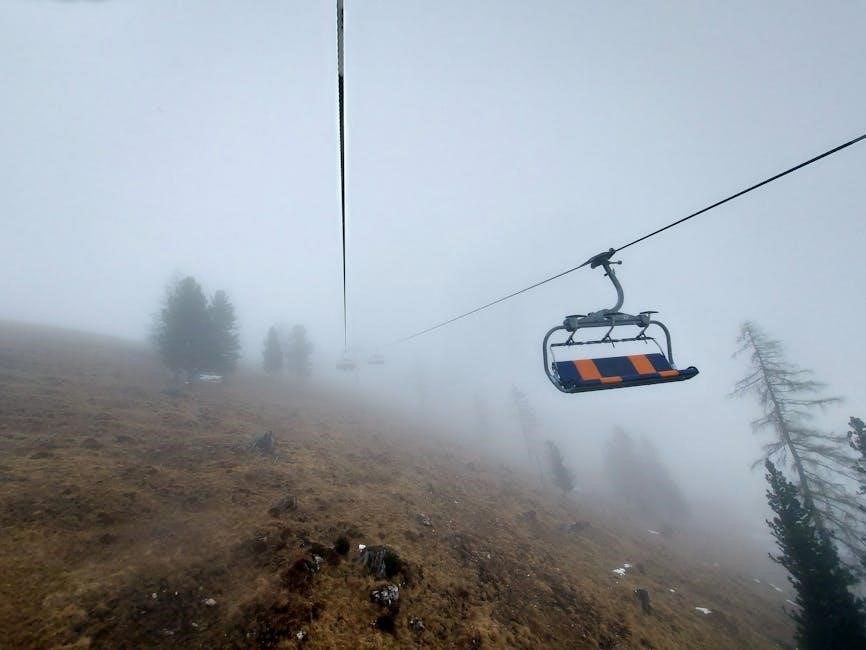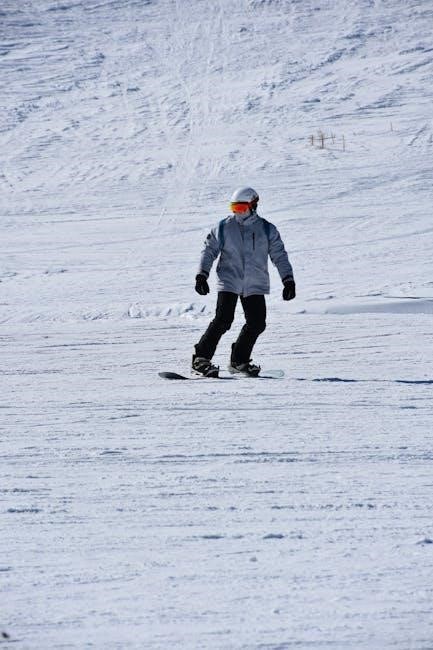Snowboard Height Guide: Finding the Right Size
Choosing the right snowboard size ensures a fantastic experience on the mountain for everyone, from beginners to experts. Selecting the right size snowboard is more complex than just using a size chart. This guide will walk you through the process.
Snowboard sizing isn’t as simple as just picking a board that looks cool.
Finding the right snowboard size is essential for a comfortable and controlled ride.
It’s the first step to enjoying your time on the slopes, regardless of your skill level.
This guide simplifies the process, providing insights into how to choose the right board.
The goal is to make your snowboard buying experience fun and get you on the hill quicker;
We will explore the key elements that influence snowboard size to help you make an informed decision.
Factors such as height, weight, riding style, and skill level all contribute to finding the perfect fit.
Whether you’re a beginner or a seasoned pro, understanding these factors will optimize your performance.
The information and snowboard sizing charts below are meant to be used as a guideline.
By the end of this guide, you’ll have the knowledge to select a snowboard that matches your needs.
The Importance of Correct Snowboard Size
Choosing the correct snowboard size significantly impacts your overall riding experience.
A properly sized board enhances control, stability, and maneuverability on the slopes.
Conversely, an incorrectly sized board can lead to difficulties in turning, balancing, and progressing your skills.
Imagine trying to navigate a winding trail with a board that’s too long or too short.
It can be frustrating and even dangerous, increasing the risk of falls and injuries;
A board that is the right size allows you to initiate turns more easily.
It allows you to maintain balance, and confidently tackle different terrains.
For beginners, a suitable board size accelerates learning.
It builds confidence, and makes the initial experience more enjoyable.
Experienced riders benefit from the optimal performance.
It allows them to push their limits, and explore more advanced techniques.
Ultimately, the correct snowboard size unlocks your full potential on the mountain;
It ensures a smoother, safer, and more rewarding snowboarding adventure.
Adjusting your snowboard size based on height can make all the difference.
Key Factors Influencing Snowboard Size
Several key factors play a crucial role in determining the ideal snowboard size for an individual.
While height is a primary consideration, it’s not the sole determinant.
Weight is arguably the most important factor, as it directly affects how the board flexes and responds to your movements.
Boot size is another critical aspect, ensuring proper fit and preventing toe or heel drag.
Riding style and preferred terrain significantly influence the choice.
Freestyle riders might prefer shorter boards for maneuverability, while freeriders often opt for longer boards for stability at high speeds.
Skill level also comes into play.
Beginners typically benefit from shorter, more forgiving boards, while advanced riders may choose longer, stiffer boards for enhanced performance.
Considering these factors in combination allows for a more personalized and accurate snowboard sizing assessment.
Ignoring any of these aspects could result in a less-than-optimal riding experience.
So, take the time to evaluate each factor carefully before making your final decision.
By doing so, you’ll increase your chances of finding a snowboard that perfectly suits your needs and abilities.

Rider Height
Rider height serves as a foundational element when determining the appropriate snowboard size.
Traditionally, a common practice involved standing a snowboard upright and assessing its height in relation to the rider.
The tip of the board should align somewhere between your collar bone and nose;
Height provides a general range for snowboard length, but it’s not the only factor.
For shorter riders, a board that reaches around the chin might offer better control.
Average-height riders can aim for a board that falls between the chin and nose.
While this method offers a starting point, modern snowboard technology considers weight, riding style, and skill level as equally important.
Relying solely on height can lead to an ill-fitting board that compromises performance and enjoyment;
Therefore, view height as an initial guideline and integrate other variables for a more refined snowboard size selection.
Manufacturers often provide height-based recommendations, but these should be supplemented with additional considerations to ensure an optimal fit.
Remember that height provides a frame, but other factors paint the complete picture.
Ultimately, the goal is to achieve a harmonious balance between height, weight, and riding preferences for an exceptional snowboarding experience.
Rider Weight
Weight plays a crucial role in determining the appropriate snowboard size.
In fact, weight is arguably more important than height when selecting the right board length.
A rider’s weight directly influences how the snowboard flexes and performs.
If a board is too stiff for a rider’s weight, it will be difficult to control and turn effectively.
Conversely, if a board is too soft, it may feel unstable and wash out during turns.
Manufacturers provide weight ranges for each snowboard model to guide riders in selecting the appropriate size.
These weight ranges are carefully calculated to ensure optimal performance and control.
It’s essential to consider your weight accurately and choose a board that falls within the recommended range.
If you fall between two sizes, consider your riding style and skill level.
Beginners may benefit from a slightly shorter board within the range, while more experienced riders might prefer a longer board for added stability.
Remember that weight is a primary factor in determining snowboard size.
While height provides a general guideline, weight fine-tunes the selection process.
By prioritizing weight, you can ensure that your snowboard flexes appropriately and delivers the performance you need on the slopes.
Ultimately, a board that matches your weight will enhance your control, stability, and overall enjoyment of snowboarding.

Boot Size
While snowboard length is primarily determined by height and weight, boot size plays a crucial role in selecting the correct snowboard width.
Snowboard width, typically measured at the waist (the narrowest point of the board), must be compatible with your boot size to prevent toe or heel drag.
If your boots overhang excessively, they can catch on the snow during turns, causing you to lose control.
This phenomenon, known as toe or heel drag, can significantly hinder your riding performance and potentially lead to accidents.
To avoid toe or heel drag, it’s essential to choose a snowboard width that accommodates your boot size.
Generally, your boots should extend slightly over the edges of the board, but not so much that they interfere with turning.
Most snowboard manufacturers provide recommended boot size ranges for each board width.
Refer to these recommendations to ensure a proper fit.
If you have larger feet, consider a wider board to provide adequate clearance.
Conversely, if you have smaller feet, a narrower board may be more suitable.
Keep in mind that boot size can vary between manufacturers, so it’s always best to try on your boots with the board before making a purchase.
A proper fit will enhance your control, stability, and overall comfort on the slopes.
Riding Style and Terrain
Your preferred riding style and the type of terrain you frequent significantly influence the ideal snowboard size.
Different styles demand different board characteristics, impacting the length and shape that will best suit your needs.
For freestyle riders who spend their time in terrain parks hitting jumps, rails, and boxes, a shorter board is often preferred.
Shorter boards are more maneuverable and easier to spin, making them ideal for tricks and freestyle maneuvers.
Freeride enthusiasts who enjoy carving down groomed runs or exploring backcountry powder typically opt for longer boards.
Longer boards provide greater stability at high speeds and better floatation in deep snow.
All-mountain riders who like to explore a variety of terrain, from groomed runs to off-piste areas, often choose a mid-length board.
These boards offer a balance of maneuverability and stability, allowing riders to adapt to different conditions.
If you primarily ride in powder, a board with a wider waist width and a longer length will provide better floatation and prevent you from sinking.
For carving on hardpack snow, a narrower board with a longer effective edge will offer better edge hold and precision.
Consider your riding style and the terrain you frequent when selecting a snowboard size to optimize your performance and enjoyment on the slopes.
Skill Level
Your skill level plays a crucial role in determining the appropriate snowboard size.
Beginners often benefit from shorter boards, as they are easier to control and maneuver, enhancing the learning process.
A shorter board allows for quicker turns and reduces the risk of catching an edge, providing a more forgiving ride for those still developing their skills.
Intermediate riders can typically transition to slightly longer boards, offering increased stability and control at higher speeds.
As riders progress, they may explore different board lengths and shapes to match their evolving riding style and terrain preferences.
Advanced riders often have a quiver of boards, each tailored to specific conditions and riding styles.
They may choose longer, stiffer boards for carving and high-speed stability or shorter, more flexible boards for freestyle riding and park tricks.
Consider your current skill level and how you plan to progress as a snowboarder when selecting a board size.
If you are a beginner, err on the side of a shorter board for easier learning.
As you improve, you can experiment with longer boards to unlock new levels of performance and enjoyment.
Remember to factor in other variables such as weight, height, and riding style to find the perfect board for your individual needs and abilities.
Snowboard Size Charts and Calculators
Snowboard size charts and calculators are invaluable tools for determining the appropriate board length based on various factors.
These resources typically consider your height, weight, skill level, and riding style to provide a recommended size range.
Size charts often present a table format, correlating height and weight ranges with corresponding snowboard lengths.
Calculators, on the other hand, utilize algorithms to process your specific inputs and generate a more precise recommendation.
Many online retailers and snowboard manufacturers offer size charts and calculators on their websites, making it easy to find the right fit from the comfort of your home.
When using these tools, it’s essential to provide accurate information to ensure the most reliable results.
Be sure to measure your height and weight correctly and honestly assess your skill level and riding preferences.
Keep in mind that size charts and calculators are intended as starting points, and personal preferences may influence your final decision.
Some riders prefer a slightly shorter board for enhanced maneuverability, while others opt for a longer board for increased stability.
Ultimately, the best way to determine the perfect snowboard size is to combine the guidance of size charts and calculators with personal experience and expert advice.
Consult with experienced snowboarders or shop staff to gain valuable insights and recommendations tailored to your individual needs.
Traditional Sizing Method: Chin to Nose

The traditional snowboard sizing method, often referred to as the “chin to nose” approach, has been a long-standing practice in the snowboarding world.
This method involves standing the snowboard vertically on its end and aligning it with your body to determine the appropriate length.
Ideally, the tip of the board should reach somewhere between your chin and nose when standing upright.
This guideline provides a general starting point for selecting a snowboard, but it’s important to consider other factors that can influence the ideal size.
While the chin-to-nose method offers a quick and easy way to estimate snowboard length, it doesn’t account for individual variations in weight, riding style, or skill level.
Weight, in particular, plays a crucial role in determining the appropriate board size, as heavier riders typically require longer boards for stability and control.
Riding style also influences the ideal length, with freestyle riders often preferring shorter boards for maneuverability and freeride riders opting for longer boards for enhanced floatation in powder.
Skill level is another important consideration, as beginners may benefit from shorter boards that are easier to control, while advanced riders may prefer longer boards for greater stability at high speeds.
Despite its limitations, the chin-to-nose method can still serve as a useful starting point for beginners or those unsure of where to begin their snowboard sizing journey.
However, it’s essential to supplement this method with other considerations and consult with experienced snowboarders or shop staff for personalized recommendations;
Understanding Snowboard Width
Snowboard width is a crucial aspect of snowboard sizing, affecting the rider’s control, responsiveness, and overall experience.
The width of a snowboard is typically measured at its narrowest point, known as the waist width.
Selecting the appropriate waist width is essential for ensuring proper boot overhang and preventing toe or heel drag.
Ideally, your snowboard boots should overhang slightly over the edges of the board, allowing you to engage the edges effectively without your boots making contact with the snow.
Too much or too little overhang can negatively impact your ability to turn and control the board.
Riders with larger feet will generally require wider boards to accommodate their boot size and prevent excessive overhang.
Conversely, riders with smaller feet may prefer narrower boards for enhanced edge control and quicker transitions.
The type of riding you plan to do can also influence your choice of snowboard width, with freestyle riders often preferring narrower boards for increased maneuverability in the park and pipe.
Freeride riders, on the other hand, may opt for wider boards for improved floatation in powder and stability at high speeds.
When selecting a snowboard, it’s essential to consider both your boot size and your intended riding style to ensure you choose a board with the appropriate width for your needs.
Consulting with experienced snowboarders or shop staff can provide valuable insights and recommendations for finding the perfect width for your riding style and preferences.

Universal Discs and Binding Compatibility
In the world of snowboarding, universal discs have become a game-changer, streamlining the process of mounting bindings to snowboards.
These discs are designed to be compatible with a wide range of binding and board patterns, offering riders greater flexibility and convenience.
Most modern bindings come equipped with a universal disc, ensuring compatibility with almost any snowboard on the market.
However, it’s always essential to double-check compatibility before purchasing bindings, especially if you have an older board with a 4×4 mounting pattern.
Some bindings may come with mini discs, which are not compatible with older 4×4 boards, so it’s crucial to ensure the disc matches your board’s mounting pattern.
When selecting bindings, consider the type of riding you plan to do, as different bindings offer varying levels of support, responsiveness, and adjustability.
Freestyle riders may prefer bindings with more flex and freedom of movement, while freeride riders may opt for stiffer bindings for enhanced control and stability.
Checking binding compatibility ensures you get a setup that works harmoniously, optimizing your performance and enjoyment on the slopes;
Universal discs have simplified the binding selection process, making it easier for riders to find the perfect match for their boards and riding styles.
By understanding the different types of discs and mounting patterns, you can confidently choose bindings that will seamlessly integrate with your snowboard, providing a secure and responsive connection.
Optimizing Your Ride with the Right Snowboard Size
Youth Snowboard Sizing Considerations
Sizing snowboards for young riders requires special attention, as their bodies are still growing and developing.
Unlike adult sizing, where height and weight are primary factors, youth snowboard sizing also considers skill level and boot size.
Youth boards typically range from 128 to 136 cm, accommodating smaller riders, but selecting the right size is crucial for their safety and progression.
A board that is too long or stiff can be difficult for young riders to control, hindering their learning process and potentially leading to injuries.
Conversely, a board that is too short may lack stability and responsiveness, making it challenging to progress beyond the basics.
When sizing a youth snowboard, it’s essential to prioritize maneuverability and control over high-speed performance.
Beginner riders should opt for shorter boards that are easier to turn and manage, allowing them to develop fundamental skills.
As their skills progress, they can gradually transition to longer boards that offer more stability and edge hold.
Boot size is also a critical factor in youth snowboard sizing, as oversized boots can compromise control and responsiveness.
Ensure that the boots fit snugly and comfortably, providing adequate support without restricting movement.
Consider youth-specific snowboard boots and bindings designed to accommodate smaller feet and provide optimal performance.
Remember to consult youth snowboard size charts as a starting point, but consider individual factors like skill level and riding style when making your final decision.
